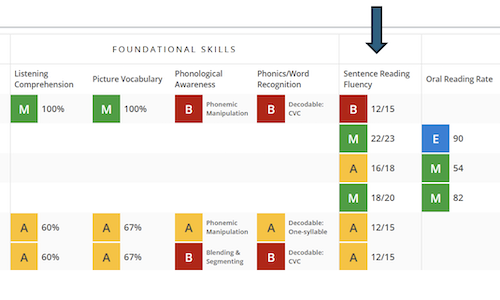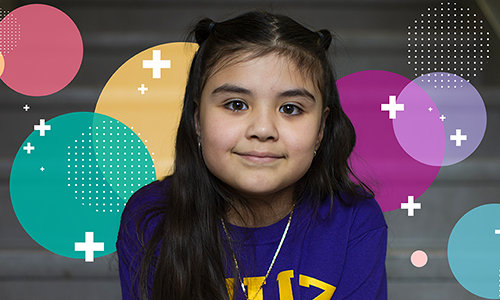 As an administrator, you’re likely familiar with those moments when the “buck” stops with you, especially when it comes to multilingual assessment decisions. Some calls come easily, rooted in years of classroom and leadership experience. But others, especially those involving assessing in languages other than English, can feel complex, high stakes, and unfamiliar. There isn’t always a single right answer, especially given the diversity of languages, cultures, and academic backgrounds of students.
As an administrator, you’re likely familiar with those moments when the “buck” stops with you, especially when it comes to multilingual assessment decisions. Some calls come easily, rooted in years of classroom and leadership experience. But others, especially those involving assessing in languages other than English, can feel complex, high stakes, and unfamiliar. There isn’t always a single right answer, especially given the diversity of languages, cultures, and academic backgrounds of students.
Here are four steps to help you feel informed and supported as you make key decisions regarding multilingual assessment in your school.
1. Define who you’re serving
Multilingual learners are students developing proficiency in English while bringing valuable linguistic and cultural assets from their home language or languages. They include:
- Newcomers. Newcomer multilingual learners are recent arrivals to the US who have some formal education in their home language or languages but are new to English and its foundational skills.
- American-born multilinguals. These students are raised in households where one or more languages other than English are spoken.
- SLIFE. Students with limited or interrupted formal education, or SLIFE, can be younger but are often older students in upper elementary grades or beyond. They arrive with gaps in their schooling due to challenging or unique circumstances.
Multilingual learner profiles are important to recognize because they tell us what a student already knows and what we can acknowledge or build on. For example, some students have only oral skills in their home language, while others have strong academic skills in that language, too. This distinction is critical because speaking another language does not automatically mean a student has literacy or academic skills in that language.
Keep in mind that every campus will have a mix of multilingual learners; there is rarely just one profile represented. Newcomers, US-born multilingual students, and students with interrupted schooling may all be present. Because of this diversity, decisions must be made case by case.
To understand an individual student’s multilingual learner profile, look into the following:
- Educational history. Reviewing each student’s educational history will help you identify which students have had continuous or interrupted schooling in languages other than English. Sometimes, this information can be provided by a teacher or a campus specialist and is based on their conversations with the student or their families. You can also review the student’s file for transcripts or information on other schools attended. You may need to explicitly ask the student’s guardians if their child has had continuous or interrupted learning and what the primary language used for instruction was.
- Program model. Determine whether a student is in an ESL, dual language, newcomer, or other program in your school. This knowledge clarifies the expectations of reaching English proficiency and can guide instructional supports and assessment decisions. For instance, in dual-language programs with a bilingual trajectory, initial and continuous assessment in the home language is encouraged, whereas in newcomer models assessment in the home language can establish baselines. In ESL programs, a student may be initially (but not continuously) assessed in their home language, due to a singular English proficiency focus.
2. Check your own lens for monolingual bias
Too often, we apply a monolingual bias—the assumption that language ability is uniform across speaking, reading, and writing—to multilingual learners. In English-speaking settings, this can sound like: “Oh, you speak Spanish. You must be able to read and write in it, maybe even teach me!”
Recognizing bias helps us see multilingual learners more accurately. Understanding each student’s language profile and, more specifically, what they can do orally versus academically, gives us a clearer picture of their strengths and helps determine whether assessment in academic Spanish should even be considered. In other words, speaking Spanish—or any language—should not be an automatic reason to assess in that language. Base your multilingual assessment decisions on evidence of literacy and academic readiness, not just oral fluency.
3. Recognize the expectations and use data to guide you
When you’re called on to make a multilingual assessment decision, it can often be because a student is not showing growth. We spoke to this in “Assessing multilingual leaners: How to make informed decisions about home language testing.” When a student isn’t showing growth, it is important to always review the expectations and data when determining whether testing in Spanish is appropriate. Be mindful of assumptions, such as believing a student should test in Spanish simply because they speak Spanish.
The expectation for every multilingual learner, regardless of home language or program model, is English language and academic proficiency. Our responsibility as educators is to ensure students are on that path, not through assumption or quick fixes, but through evidence-based decisions that support long-term success. The English Language Proficiency (ELP) Standards can guide you. These standards are a legal requirement and anchor. They break English proficiency into five levels and describe what those levels look like from kindergarten through grade 12.
Data from MAP® Growth™ and MAP® Reading Fluency™—available in both English and Spanish—can also bring a student’s abilities into sharper focus. See the section titled “The three-scenario flowchart” in our previous article for more on this.
4. Collaborate with intention
Supporting multilingual learners is a team effort— you are not expected to have every answer on your own! The goal when making multilingual assessment decisions isn’t perfection, but precision, fairness, and confidence that each multilingual learner is receiving support that reflects both accountability and care.
When a case is complex or unclear, bring in key people who can add clarity, such as your district or campus multilingual learner specialist and/or the instructional staff who work most closely with the student. Multilingual learner expertise can help you interpret data, explain important nuances, and ensure decisions align with federal and state requirements. Teacher insight can verify and answer specific questions about documented supports. Together, these perspectives can clarify the full picture and strengthen your knowledge base, enabling you to make a confident, well-supported final decision.
In closing
Every multilingual assessment decision you make ripples outward into a student’s learning story. Taking the time to pause, seek clarity, and collaborate isn’t just leadership; it’s compassion. Because behind every data point is a learner depending on us to get it right—and we get there best when we lead together.
To learn more about assessing students in Spanish with MAP Growth and MAP Reading Fluency, visit our website.






